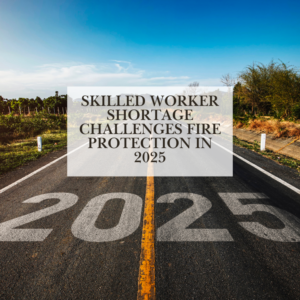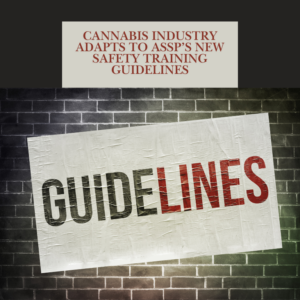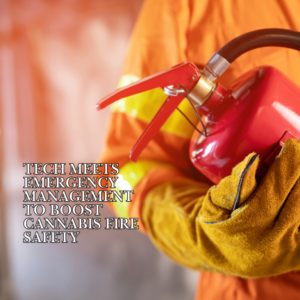Simplifying OSHA’s Rooftop Fall Protection Guidelines

Falls from heights are among the leading causes of serious injuries and fatalities in the workplace, especially in industries where employees frequently work on rooftops, such as construction, maintenance, and roofing. To address this risk, the Occupational Safety and Health Administration (OSHA) has established comprehensive fall protection guidelines that employers and workers must follow. These regulations are designed to ensure safety when working at heights, but they can sometimes seem complex or confusing to navigate.
This article will break down OSHA’s rooftop fall protection guidelines, explaining the key requirements, common hazards, and best practices for keeping workers safe. By simplifying these guidelines, both employers and employees can better understand their responsibilities, implement effective safety measures, and reduce the risk of falls.
The Importance of Fall Protection
Falls from heights are the leading cause of fatalities in the construction industry, according to OSHA. Even a short fall can result in severe injuries, ranging from broken bones to traumatic brain injuries. Rooftop work poses particular risks because of uneven surfaces, sloped areas, skylights, and other hazards that can increase the likelihood of a fall.
OSHA’s fall protection standards aim to prevent these incidents by requiring employers to provide necessary safety equipment and training. These regulations apply to various industries, but they are especially relevant in construction, where rooftop work is common.
Understanding OSHA’s Rooftop Fall Protection Guidelines
OSHA has established specific regulations that employers must follow to protect workers from falls. These guidelines are found primarily in OSHA’s Construction Standards under 29 CFR 1926 Subpart M, which outlines fall protection requirements for construction work at heights.
Here are the key components of OSHA’s rooftop fall protection guidelines:
Trigger Height: The 6-Foot Rule
OSHA’s fall protection requirements come into effect when employees are working at heights of six feet or more above a lower level. This is commonly known as the “6-foot rule.” Once workers are at or above this height, employers must implement fall protection measures to prevent falls.
This rule applies to various situations, including when employees are working on rooftops, ladders, scaffolds, or near edges. For low-slope roofs (a slope less than 4:12), the 6-foot rule is especially important because these surfaces can often give a false sense of security.
Fall Protection Systems
When rooftop work is performed at heights of six feet or more, OSHA requires employers to implement one or more fall protection systems. The most commonly used systems include:
Guardrail Systems: These are physical barriers installed around the perimeter of the roof or work area to prevent workers from falling. Guardrails must be at least 42 inches high and able to withstand a force of at least 200 pounds.
Personal Fall Arrest Systems (PFAS): A PFAS consists of a full-body harness, a lanyard, and an anchor point. This system is designed to stop a worker from falling and minimize the impact of the fall. The anchor point must be able to support at least 5,000 pounds, and workers must be trained on how to properly use the harness and other equipment.
Safety Net Systems: Safety nets can be installed below the roof or work area to catch workers if they fall. While safety nets are less common than guardrails or PFAS, they can be useful in certain scenarios where other fall protection systems are not feasible.
Warning Line Systems: For low-slope roofs, a warning line system can be used to mark a safe working area. This system involves placing ropes, chains, or wires at least six feet from the edge of the roof to create a visual warning. Workers outside of the warning line must use additional fall protection measures.
Protection Around Skylights and Roof Openings
Skylights, roof hatches, and other openings in the roof surface pose a significant fall hazard. OSHA requires that these openings be protected with either guardrails or a cover that can withstand at least 200 pounds of pressure. Skylights are particularly dangerous because they may not be easily visible, and workers can fall through them if they are not properly covered or marked.
Training Requirements
OSHA emphasizes the importance of training in preventing falls. Employers must provide comprehensive training to all employees who work at heights. This training should include instruction on:
- Recognizing fall hazards
- Proper use and inspection of fall protection systems
- How to install, use, and disassemble fall protection equipment
- The importance of following safety procedures
Employers must ensure that workers are competent in using fall protection systems and can identify hazards in their work environment. Additionally, if there are changes in the worksite or if new fall protection systems are introduced, refresher training may be necessary.
Common Rooftop Hazards
While OSHA’s fall protection guidelines provide a framework for safety, it’s essential for employers and workers to be aware of the specific hazards they may encounter on a rooftop. Some common hazards include:
Unprotected Edges: Rooftops without guardrails or other protective barriers around the edges are a leading cause of falls.
Sloped Roofs: Steep roofs increase the risk of workers losing their balance and falling.
Skylights and Roof Openings: As mentioned earlier, these openings can be difficult to spot and are a frequent cause of accidents.
Weather Conditions: Wet, icy, or windy conditions can make rooftop surfaces slippery, increasing the likelihood of a fall.
Loose Debris: Objects like tools, roofing materials, and debris can create tripping hazards on the roof.
By identifying and addressing these hazards, employers can take proactive steps to prevent falls and protect their workers.
Best Practices for Implementing OSHA’s Fall Protection Guidelines
Successfully implementing OSHA’s rooftop fall protection guidelines requires a combination of planning, equipment, and training. Below are some best practices that can help employers meet these standards and reduce the risk of falls:
Conduct a Job Hazard Analysis (JHA)
Before starting any rooftop work, employers should conduct a job hazard analysis to identify potential fall hazards and determine the most appropriate fall protection measures. A JHA involves reviewing the specific tasks that workers will perform and assessing the risks associated with each task.
Use the Right Equipment
Selecting the correct fall protection system for the job is crucial. Employers should consider factors such as the type of roof (low-slope or steep-slope), the height of the work area, and the availability of anchor points when choosing between guardrails, PFAS, safety nets, or warning lines.
Ensure Regular Equipment Inspection
Fall protection equipment must be regularly inspected to ensure that it is in good working condition. Employers should establish a routine inspection process to check harnesses, lanyards, and anchor points for wear and tear. Defective equipment must be removed from service immediately.
Provide Ongoing Training
Fall protection training should not be a one-time event. Employers should provide ongoing training to workers, especially if there are changes in jobsite conditions or if new equipment is introduced. Regular training helps reinforce the importance of fall protection and ensures that workers remain knowledgeable about the latest safety procedures.
Monitor Compliance
Employers must actively monitor compliance with fall protection guidelines. This includes observing workers on the roof to ensure they are using the proper safety equipment and following established procedures. Supervisors should intervene if they observe unsafe behavior and take corrective action to prevent future incidents.
Prioritizing Safety on Rooftops
Falls from rooftops are preventable with the right safety measures in place. OSHA’s rooftop fall protection guidelines provide a clear framework for protecting workers, but it is up to employers and employees to ensure that these regulations are followed. By understanding the key components of OSHA’s guidelines, recognizing common hazards, and implementing best practices, employers can create a safer work environment and reduce the risk of rooftop falls.
Ultimately, the goal is to ensure that every worker returns home safely at the end of the day. With proper planning, the right equipment, and a commitment to safety, employers can meet OSHA’s requirements and protect their workforce from the dangers of rooftop work.











